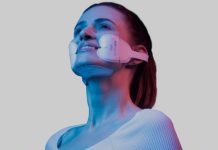Evolus EOLS is capturing the aesthetic neurotoxins market with its flagship product, Jeuveau. Building on that reputation, the company is set to tap into the lucrative dermal fillers market through strategic partnerships with Evolysse and Estyme. This venture, coupled with robust revenue growth and an imminent turn to profitability, makes Evolus an exciting prospect for potential investors looking to capitalize on the growing aesthetics market.
Evolus is a performance beauty company with a flagship product, Jeuveau, a neurotoxin treatment for aesthetic use. Its uniqueness lies in the company’s business model, innovative digital platform, and strategic targeting of the cash-pay aesthetic-only market.
The company aims to capture the rapidly expanding $19 billion global aesthetics market, especially the largest and fastest-growing segments of aesthetic neurotoxins and dermal fillers. It recently entered an exclusive agreement to distribute Evolysse, a range of unique dermal fillers currently under late-stage development, in the U.S. and Estyme in Europe.
Evolus has submitted the final portion of its premarket approval (PMA) application to the U.S. Food and Drug Administration (FDA) for its new dermal filler products: Evolysse Lift and Evolysse Smooth, both targeting nasolabial folds (NLFs). Upon successful review, the FDA is expected to approve these products in the second half of 2025. A recent U.S. pivotal study confirmed the effectiveness and safety of these products, endorsing both as superior to Restylane-L at six months.
The estimated market size for the flagship product Jeuveau is projected to expand from $3.5 billion to $6 billion in 2028. With the launch of a dermal filler product, the estimated market opportunity is anticipated to grow by another $4 billion by 2028. Given the expansion of the total addressable market, management has targeted revenue growth to $700 million in 2028, up from about $200 million last year.







